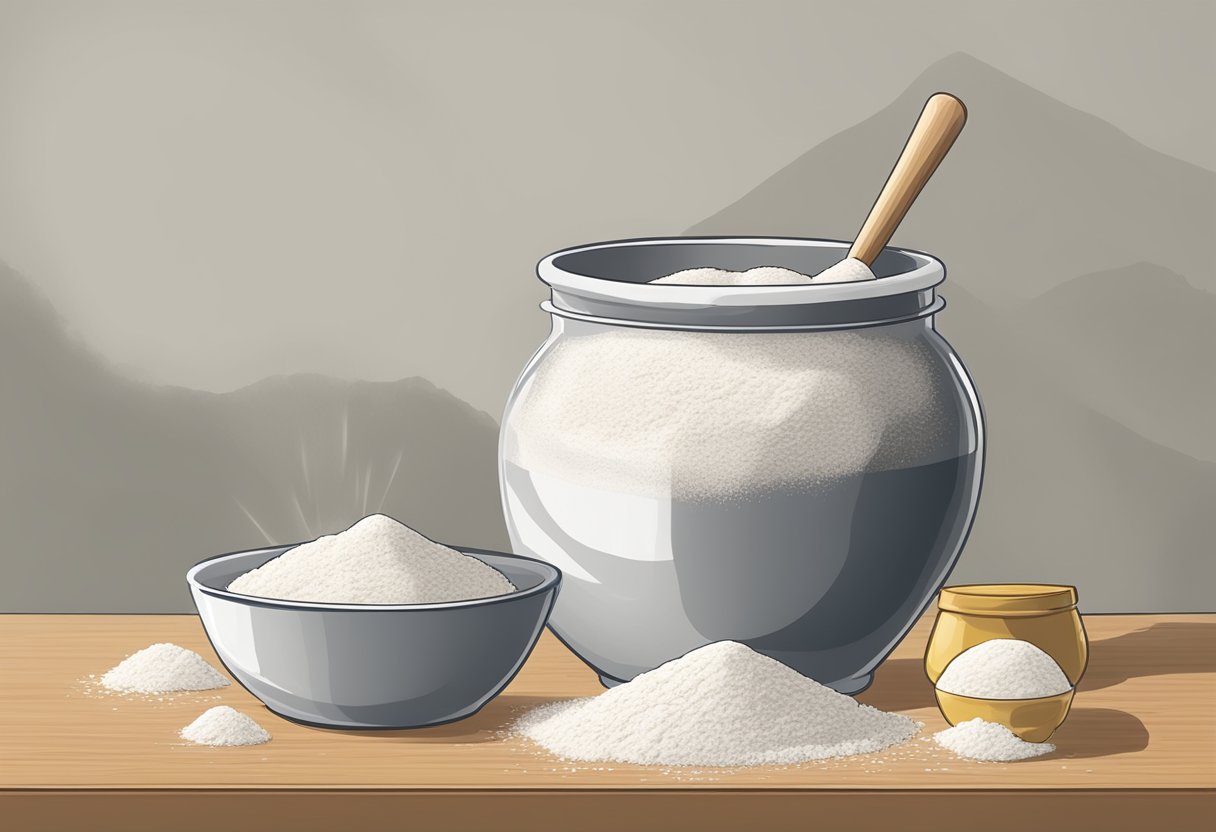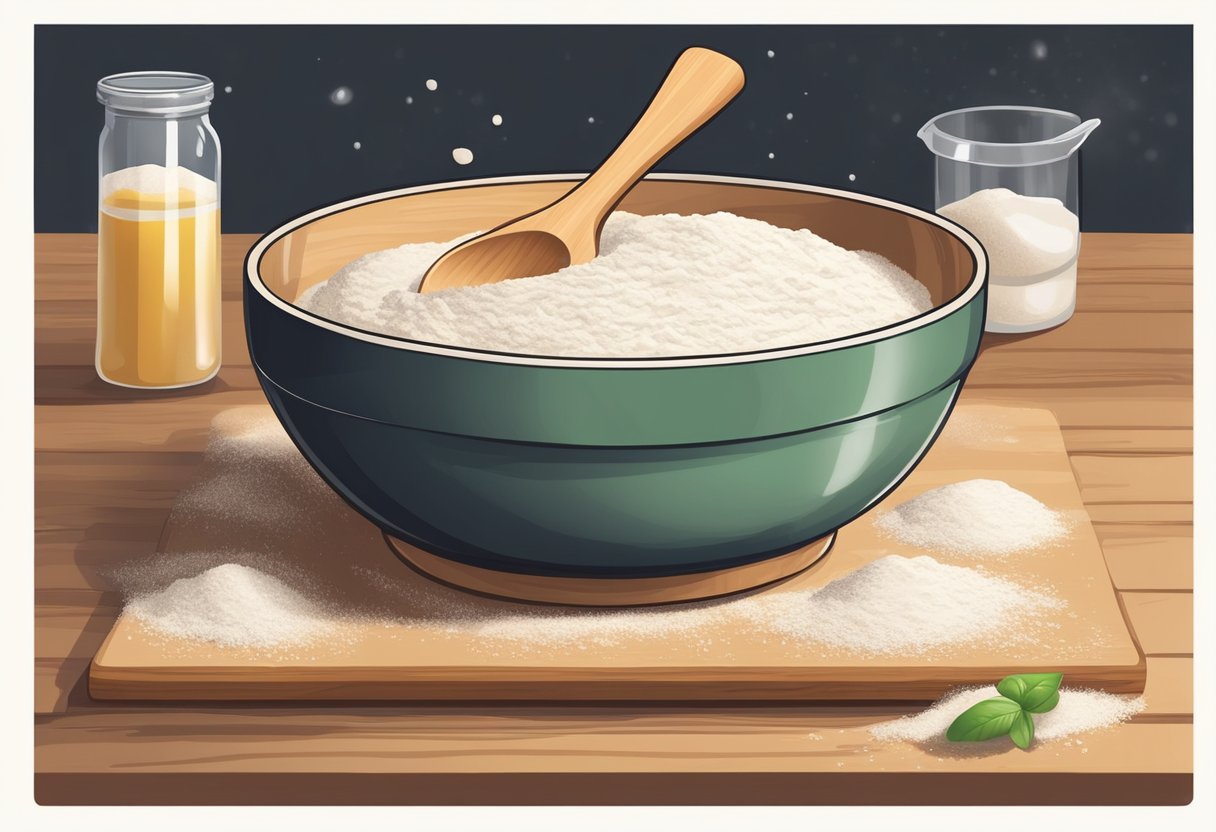How to Make Perfect Pizza Dough: A Step-by-Step Guide
Making pizza at home is a fun and rewarding experience. However, it can be challenging to get the perfect pizza dough. The dough is the foundation of the pizza, and it is essential to get it right. With a few tips and tricks, anyone can make the perfect pizza dough at home.

The perfect pizza dough requires a few essential ingredients, including flour, water, salt, and yeast. The type of flour used will affect the texture and flavor of the dough. Equipment needed includes a mixing bowl, measuring cups and spoons, and a rolling pin. The dough making process involves mixing the ingredients, letting the dough rise, and shaping the dough. Pre-baking techniques such as docking and par-baking can help prevent a soggy crust. Final touches, such as brushing the crust with olive oil or sprinkling with herbs, can add flavor and texture. Baking and finishing the pizza involves preheating the oven, adding toppings, and baking the pizza until the crust is golden brown.
Key Takeaways
- The perfect pizza dough requires essential ingredients and equipment.
- The dough making process involves mixing, rising, and shaping the dough.
- Pre-baking techniques and final touches can add flavor and texture to the crust.
Essential Ingredients

To make a perfect pizza dough, there are four essential ingredients that one needs to consider: flour, yeast, water, salt, and olive oil. Here is a breakdown of each ingredient:
Flour Types
The type of flour used is crucial in determining the texture and flavor of the pizza dough. Most pizza recipes call for all-purpose flour, which has a moderate protein content and produces a chewy crust. However, other types of flour such as bread flour, which has a higher protein content, can be used to create a crust with a crispy texture. For a gluten-free option, one can use almond flour or coconut flour.
Yeast Selection
Yeast is a crucial ingredient in making pizza dough. It is responsible for the fermentation process that makes the dough rise. There are two types of yeast: active dry yeast and instant yeast. Active dry yeast needs to be dissolved in warm water before using, while instant yeast can be added directly to the flour. Both types of yeast work well, but instant yeast is more convenient and produces consistent results.
Water and Salt
Water is the primary liquid used in making pizza dough. It is essential to use water that is at room temperature, as hot water can kill the yeast, while cold water can slow down the fermentation process. Salt is also a vital ingredient, as it enhances the flavor of the dough and helps to regulate the fermentation process.
Olive Oil
Olive oil is an optional ingredient that can be added to the pizza dough to enhance its flavor and texture. It can also be used to coat the dough before adding the toppings to prevent them from making the crust soggy. When using olive oil, it is essential to use a high-quality extra virgin olive oil for the best results.
By using the right ingredients and following the correct techniques, anyone can make a perfect pizza dough that will impress their family and friends.
Mixing and Kneading:
- Briefly explain the purpose of mixing and kneading. You can mention how mixing combines the ingredients, while kneading develops the gluten structure, which contributes to the dough’s elasticity and chewiness.
- Briefly describe the different mixing methods – by hand or with a stand mixer. Mention the ideal consistency of the dough – smooth and slightly sticky.
Rising:
- Explain the importance of letting the dough rise. It allows the yeast to ferment and create air bubbles, which results in a light and airy crust.
- Briefly mention the ideal rising environment – warm and slightly humid. Mention the typical rising time (around 1-2 hours) and how it can vary based on factors like room temperature and yeast activity.
Shaping the Dough:
- Briefly explain how to shape the dough into a round pizza disc. You can mention using your hands to gently stretch and press the dough outwards.
Pre-Baking Techniques:
- Briefly explain “docking” – poking small holes in the dough with a fork to prevent air bubbles from forming large pockets.
- Briefly explain “par-baking” – pre-baking the crust for a few minutes before adding toppings. This helps to ensure a crispy crust even if the toppings are heavier or release moisture.
Conclusion:
- Briefly encourage readers to experiment with different flours, toppings, and techniques to find their perfect pizza dough.
Additional Tips:
- You can mention the importance of preheating the oven to ensure an even bake and a crispy crust.
- Briefly mention different topping options, like classic tomato sauce and mozzarella, or more creative options like vegetables, meats, and cheeses.
By incorporating these suggestions, you can further enhance your article and provide readers with a comprehensive guide to creating delicious homemade pizza.
Perfect Pizza Dough FAQ
What type of flour should I use?
For a classic pizza dough, most recipes call for all-purpose flour. This flour offers a good balance of gluten development (for chewiness) and extensibility (for stretching). However, bread flour with a higher protein content can also be used for a chewier crust.
What are the essential ingredients?
The essential ingredients for a basic pizza dough are:
- Flour: All-purpose or bread flour
- Water: Warm water activates the yeast
- Yeast: Active dry yeast or instant yeast leavens the dough
- Salt: Enhances flavor and controls yeast activity
- Olive oil: Adds flavor and richness
How can I achieve an airy crust?
Several factors contribute to an airy crust:
- Proper hydration: Using the right amount of water allows for gluten development while remaining workable.
- Kneading: Kneading develops the gluten structure, creating air pockets in the dough.
- Fermentation: Allowing the dough to rise allows the yeast to produce carbon dioxide gas, which expands the dough.
- High-temperature baking: Baking at a high temperature sets the gluten structure and creates steam, further inflating the crust.
What kind of mixing bowl should I use?
A large bowl that allows enough space for the dough to rise is ideal. Stainless steel, glass, or ceramic bowls are all suitable options.
Why is olive oil added?
Olive oil adds a subtle flavor and richness to the dough. It also helps prevent the dough from sticking to the bowl and makes it slightly more pliable.
What is active dry yeast?
Active dry yeast is a type of yeast that needs to be activated in warm water before use. It’s readily available in most grocery stores and offers good control over the fermentation process.
What is par-baking?
Par-baking involves partially baking the pizza crust before adding the toppings. This can be helpful in achieving a crispier crust, especially if using a lot of wet toppings.
What is the fermentation process?
Fermentation is the process where yeast feeds on sugar in the dough and produces carbon dioxide gas. This gas expands the dough, making it rise. The fermentation process is crucial for developing flavor and texture in the pizza dough.
